Niemann-Pick Disease (NPD)
- Home
- Metabolic Diseases
- Niemann-Pick Disease (NPD)
Given the rarity and complexity of Niemann-Pick disease (NPD), In vitro diagnostic (IVD) development plays a pivotal role in addressing unmet diagnostic needs. With a team of researchers and scientists well versed in NPD, Protheragen is dedicated to developing advanced IVD products for NPD. We also provide point-of-care testing and companion diagnostic development services to facilitate rapid diagnosis and personalized therapeutics of NPD.
Niemann-Pick disease (NPD) refers to a group of exceptionally rare heritable metabolic disorders defined by the pathological build-up of certain lipids in cells, most notably sphingomyelin and cholesterol. The pathological build-up occurs as a result of lacking certain enzymes or proteins that facilitate lipid metabolism, thus resulting in cellular dysfunction and progressive damage to the liver, spleen, brain, lungs, and other vital organs. The types of NPD include:
| Disease Types | Causes | Onset |
| Niemann-Pick Disease Type A (NPD-A) | Deficiency of the enzyme acid sphingomyelinase (ASM) due to mutations in the SMPD1 gene. | Infancy |
| Niemann-Pick Disease Type B (NPD-B) | Partial deficiency of acid sphingomyelinase (ASM) due to mutations in the SMPD1 gene. | Childhood or later |
| Niemann-Pick Disease Type C (NPD-C) | Mutations in the NPC1 or NPC2 genes, leading to impaired intracellular cholesterol transport. | Infancy, childhood, or adulthood |
| Niemann-Pick Disease Type D (NPD-D) | A specific variant of NPD-C, historically identified in a Nova Scotian population, caused by mutations in the NPC1 gene. | Infancy, childhood, or adulthood |
To manage and provide therapeutics for Niemann-Pick disease (NPD), early and accurate diagnosis is important. However, there is often a delay or misdiagnosis due to the infrequency and variability of the symptoms. Biomarkers are measurable indicators that indicate the diagnosis of NPD and aid significantly in the verification of the diagnosis, differentiation of NPD types, and monitoring of the disease's progression.

Enzyme activity biomarkers directly measure the function of enzymes involved in lipid metabolism. For example, in NPD-A and NPD-B, acid sphingomyelinase (ASM) deficiency is a key diagnostic hallmark, and reduced ASM activity can be confirmed by fluorescent or colorimetric assays.
Enzymes

NPD is confirmed at the molecular level by genetic biomarkers. For NPD-A and NPD-B, theses subcategories are associated with the mutations of the SMPD1 gene while NPD-C is associated with NPC1 or NPC2 gene mutations. These mutations are analyzed using NGS techniques.
Genetic Biomarkers

Biomarkers of lipids and metabolites indicate the pathological deposit of lipids and metabolites. For instance, the hallmark signs of NPD-A, NPD-B, and NPD-C, which is characterized by the elevated concentration of sphingomyelin and cholesterol, is quantified by means of LC-MS/MS.
Lipid and Metabolite Biomarkers
The development of in vitro diagnostic (IVD) for Niemann-Pick disease (NPD) has significant implications for its diagnosis, therapeutics, and prognosis. In spite of progress towards biomarker and genetic testing as well as enzyme assay development, challenges such as disease heterogeneity, low disease awareness, and the necessity for early detection tools still exist.
Understanding the hurdles involved in IVD development for Niemann-Pick disease (NPD), Protheragen is devoted to studying disease biomarkers and investing resources in modern technologies and skilled personnel to create state-of-the-art IVD solutions. We specialize in the design of NPD-specific metabolite and genetic testing reagents/kits. They, together with other diagnostic devices, provide precise and dependable examination when utilized.

IVD Product Development Services
Protheragen specializes in providing cutting-edge companion diagnostic development services tailored for Niemann-Pick disease (NPD). Our expertise ensures accurate and personalized diagnostic tools, paving the way for targeted therapeutic strategies. If you are interested in our services, please feel free to contact us for more details and quotation information of related services.
Reference
All of our services and products are intended for preclinical research use only and cannot be used to diagnose, treat or manage patients.